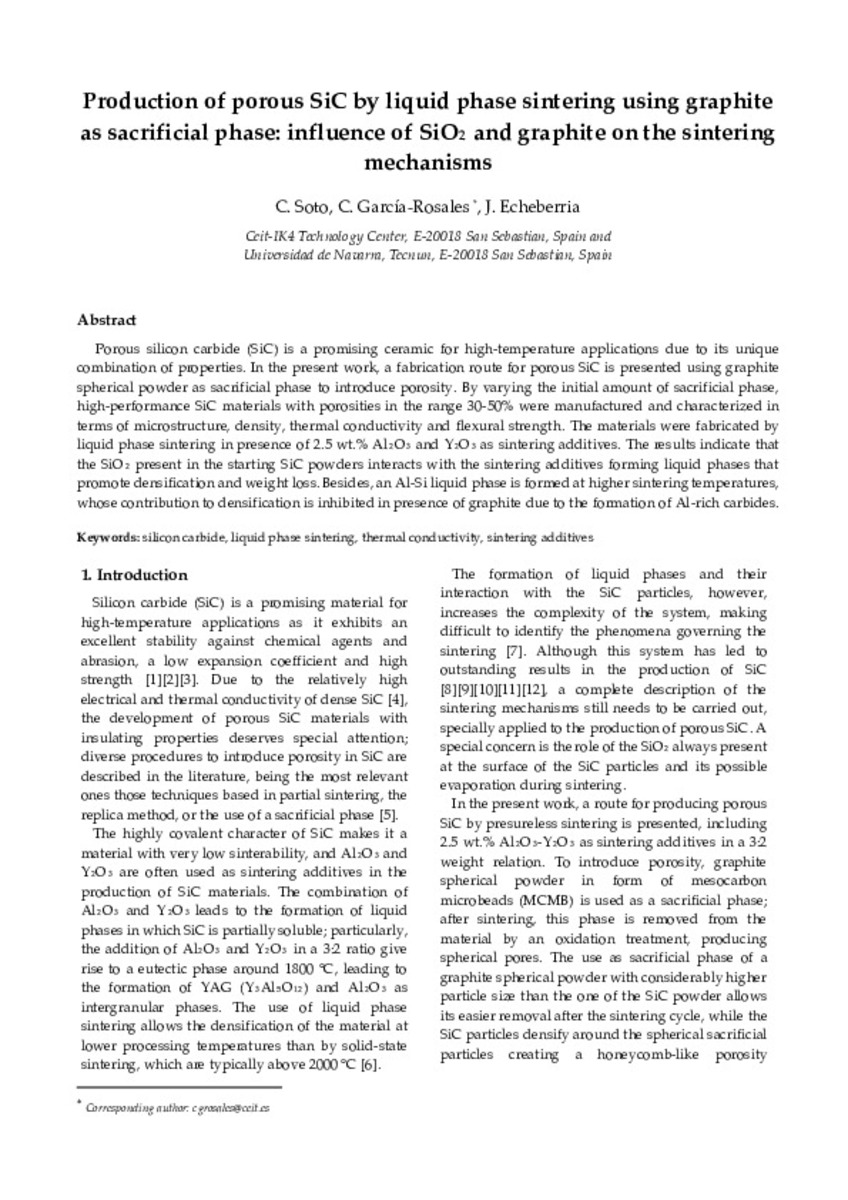Production of porous SiC by liquid phase sintering using graphite as sacrificial phase: Influence of SiO2 and graphite on the sintering mechanisms.
Keywords:
Silicon carbide.
Sintering additives.
Liquid phase sintering.
Thermal conductivity.
Citation:
Soto, C., García-Rosales, C., & Echeberria, J. (2019). Production of porous SiC by liquid phase sintering using graphite as sacrificial phase: Influence of SiO2 and graphite on the sintering mechanisms. Journal of the European Ceramic Society, 39(14), 3949-3958.
Statistics and impact
0 citas en

0 citas en

Items in Dadun are protected by copyright, with all rights reserved, unless otherwise indicated.







